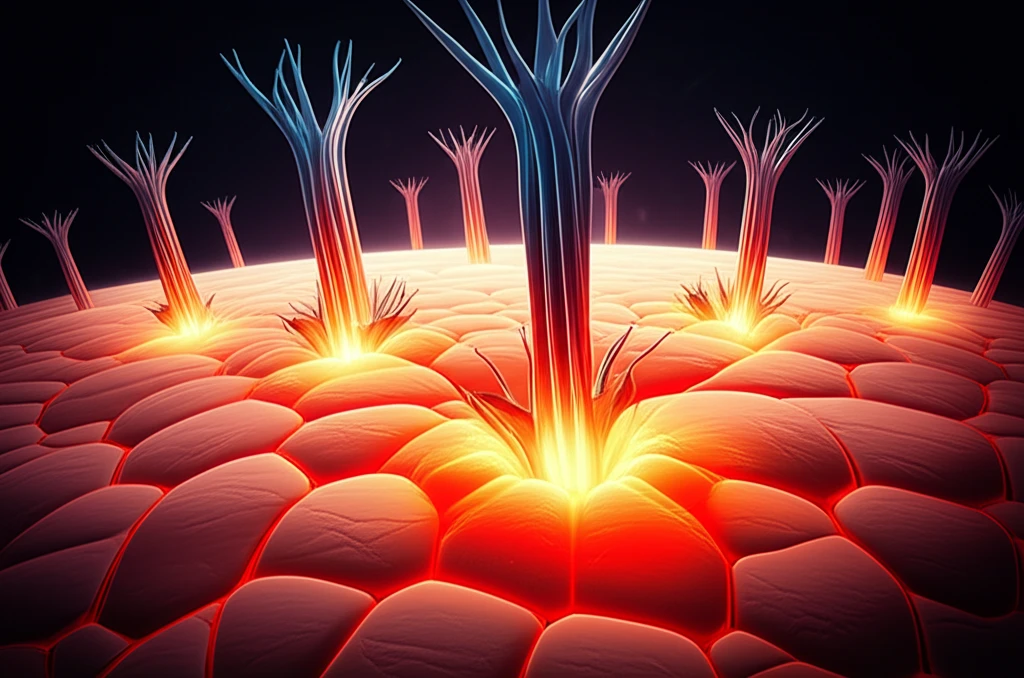
Healing Held Hostage: How Your Immune System Could Be Delaying Skin Repair
"Unraveling the link between Dectin-2, inflammation, and neutrophil activity in chronic wound healing."
When you suffer a cut, scrape, or burn, your body kicks into repair mode. This complex process involves several overlapping phases, from halting the bleeding and clearing debris to rebuilding tissue and restoring the skin's protective barrier. Inflammation, often seen as a negative, is actually a crucial first step, signaling the immune system to come to the rescue and prevent infection. But what happens when this inflammatory response overstays its welcome?
New research is shedding light on how a specific part of your immune system, the Dectin-2 pathway, can sometimes hinder the skin's natural healing abilities. While Dectin-2's job is to recognize and respond to fungi and other invaders, an overactive Dectin-2 response can trigger excessive inflammation, particularly involving neutrophils, a type of white blood cell. This can lead to delayed wound closure, increased tissue damage, and prolonged discomfort.
This article will explore these groundbreaking findings, explaining how Dectin-2 works, what happens when it becomes overactive, and what this means for the future of wound care. Whether you're dealing with a stubborn cut, recovering from surgery, or simply interested in optimizing your body's healing processes, understanding the role of Dectin-2 could be the key to faster, more effective skin repair.
Dectin-2: Friend or Foe in Wound Healing?

Dectin-2 is a receptor on immune cells that recognizes certain sugars, particularly a-mannan, found on the surface of fungi like Candida albicans. When Dectin-2 encounters these sugars, it activates a signaling pathway that leads to inflammation. This is normally a good thing, as it helps the body fight off fungal infections. However, like any immune response, the Dectin-2 pathway can sometimes go into overdrive.
- Faster Healing Without Dectin-2: Mice lacking the Dectin-2 gene showed significantly faster wound closure and re-epithelialization (the process of new skin cells covering the wound) compared to normal mice.
- Delayed Healing with a-mannan: In normal mice, administering a-mannan (to activate Dectin-2) delayed wound closure. However, this delay was not observed in mice lacking Dectin-2, confirming that the effect was Dectin-2-dependent.
- Neutrophil Involvement: a-mannan administration led to prolonged infiltration of neutrophils into the wound site and increased the presence of citrullinated histone, a marker of NETosis.
- Blocking Neutrophil Elastase: Using a neutrophil elastase inhibitor improved wound healing in mice treated with a-mannan, suggesting that neutrophil elastase, an enzyme released by neutrophils, plays a role in the delayed healing.
Implications and Future Directions
This research suggests that modulating the Dectin-2 pathway could be a potential strategy for improving wound healing, especially in cases where inflammation is excessive or prolonged. For example, individuals with chronic wounds, such as diabetic ulcers, might benefit from treatments that dampen Dectin-2 activity or reduce neutrophil infiltration.
However, it's important to note that Dectin-2 plays a crucial role in fighting fungal infections. Completely blocking Dectin-2 could increase the risk of infection, so any therapeutic approach would need to be carefully targeted to reduce inflammation without compromising the immune system's ability to defend against pathogens.
Future research will focus on identifying specific molecules that can selectively modulate the Dectin-2 pathway and on developing targeted therapies that promote wound healing without increasing the risk of infection. Understanding the intricate interplay between the immune system and skin repair is crucial for developing more effective treatments for a wide range of wound-related conditions.
